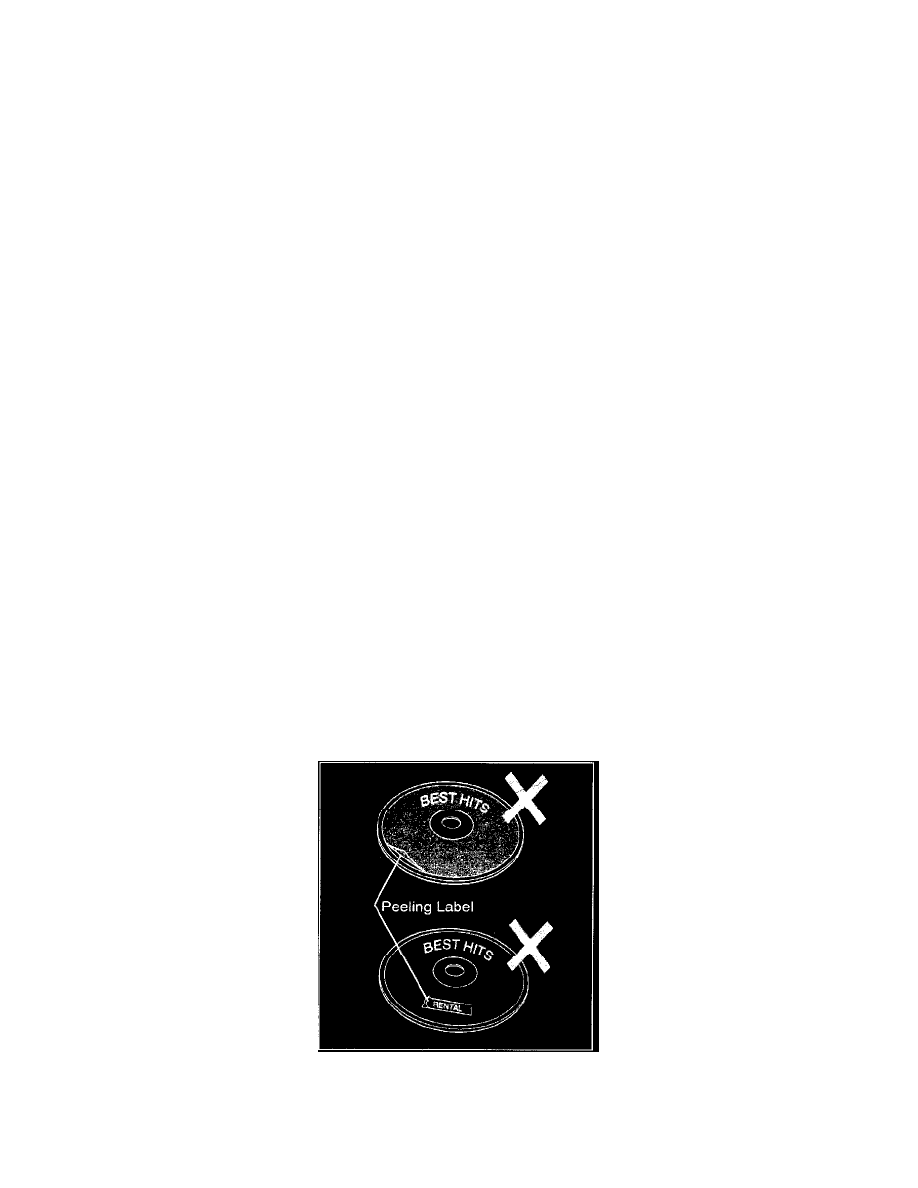Eclipse Spyder GS L4-2350cc 2.4L SOHC MFI (2001)

Remove any "burrs" on the inside or outside of the disc. Use the edge of a pencil or ball point pen as shown.
^
Damaged, Deformed, Cracked, Warped Discs - Check each disc. There should be no cracks, scratches, deformities (like warped discs), etc. Make
sure the disc is flat. Any of these conditions can cause CD load, eject, inoperative problems. Deformities or damage can occur during disc
production, by leaving discs in a hot vehicle, or by improper disc handling or care. Discs with any of these conditions should not be used.
3.
Commercial Music CD: Disc Size
Most commercially available music CDs are 4.7 inches in diameter. Less common are the 3 inch CD "singles". Some factory installed CD players in
Mitsubishi vehicles can play both the 4.7 inch and 3 inch CDs, while other CD players CANNOT play the smaller 3 inch disc. BE SURE TO CHECK
THE OWNER'S MANUAL FOR THE VEHICLE TO SEE WHAT SIZE DISC THE FACTORY INSTALLED CD PLAYER CAN PLAY
SUCCESSFULLY DO NOT insert a 3 inch diameter CD into a CD player which is not compatible.
4.
Home-Recorded CD-R/RW
QUALITY
Home-recorded CDs (CD-R & CD-RW) were originally designed for home computer usage. Use of home-recorded CDs in an automotive CD player
may result in a variety of problems. In other cases the CD-R/RW may perform satisfactorily. Most CD players in 2001, 2002, and 2003 model year
vehicles should be able to play CD-R discs, however not all CD-R and CD-RW are equal. Quality and the ability of the disc to be played in automotive
CD players depends on the type of recorder used to create the disc, the recording speed (write speed), the quality of the blank CD used, etc.
When you receive a complaint, ask the the following questions to help determine the source of the problem:
^
Is the disc scratched? Does the problem occur at the same place on the disc?
If yes, advise the customer not to use the damaged/scratched disc.
^
Does the problem always occur on the same road?
If yes, the road is probably bumpy which will cause skipping. This can be expected.
^
Is there a label or sticker on the disc?
Make sure the label is applied properly; not peeling; swelling or bubbled. Using discs with stick-on labels is not recommended.
^
What was the recording method?
Try to determine recording speed. Slower recording speed/times produce better CDs.
^
Does the reported problem or condition occur in another car audio system?
If yes, check for burrs, scratches, or damage on the disc.
LABELS/STICKERS
After recording CD-R/RW, customers may put a label/ sticker on the disc to write titles or songs on for disc identification. If the quality of the
label/sticker is poor, or the label/ sticker is applied improperly, the CD mechanism may have problems such as CD inoperative, CD won't load, CD won't
eject, etc.
